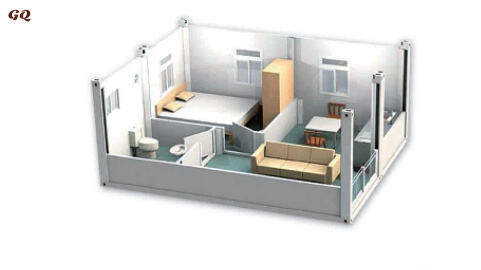Introduction
The decision to build one's own home can indeed be a momentous one. Anyone who has planned a new house of late will know that thousands of details are involved. it is in a word, huge. The financial and environmental costs of site-built homes render them less appealing. In contrast, modern prefabricated (prefab) houses are entering the stage. This article addresses the economic implications of those two modes of construction, in the hope of bringing some clarity to how you might build your dream home.
Overview of Prefab Construction Costs
They produce finished products in a controlled environment, and then erect them on site. The price of each square foot for prefab houses is generally lower than that of home using traditional means, ranging from around $80 to about $160. In turn, the cost savings which accrue to prefab houses derive from labor and materials usage:
Quick bet construction: prefab houses can often be built 30% to 60% faster than site-built in terms of manpower hours.
Materials efficiency: Factories use materials very efficiently, lowering both waste and its costs.
Energy efficiency: Many prefabricated houses are designed with energy-saving features that cut utility bills once completed.
For example, factors causing the price of prefab houses to vary include the size of one's house, materials used, how much it is customized and also its location. Although prefab houses receive some customization, they may not be as flexible in terms of design alterations and additions as homes on site.
Comparison of Costs
A direct comparison between purchasing prefab and building on-site houses shows that sometimes prefabs looks more reliable. Prefab houses can be 10 to 20 percent less expensive when compared to the same size house in site-built form. This is due to both an efficient manufacturing process and fewer requirements for on-site labor.
While other costs (e. g., land, permits and utilities) may cause the bottom-line difference to change, energy-efficient designs and lower maintenance costs often allow prefab homes to still win through in terms of overall cost.
Financial Implications
The original investment with a prefab home is in general less than the same amount for a site-built one. Financing alternatives for prefab homes have banks plus other lending institutions giving mortgages and loans like ones they extend to traditional homeowners. Nevertheless, with the faster construction of prefab houses, you may get income from your investment dollar more rapidly.
Construction costs may be hit by market fluctuations, possibly resulting in increased materials and labor rates over time. Due to the controlled production environment of prefab houses in some cases they can offer protection against these changes.
Case Studies
Comparative case studies on prefabricated versus site-built houses offer particular examples of cost differences. For instance, a one-story, 2,000 square foot single story, finished prefab house might cost between $160,000 to $320,000, including site work and its assembly and erecting. On the other hand, a (let us say also one-story) same-sized site-built home could take between $200,000 and $400,000, if you used popular materials.
Weight Breakdown and Comparative Study
of costs in many case histories show prefabricated houses house expenses is lower overall, even when adding customizations and upgrades. The speed of construction combined with minimal waste are also enablers for this kind of cost-effectiveness in featherbed housing.
Market Trends and Future Costs
Today's prefab houses are showing a strong price/performance relationship. It seems likely that technological breakthroughs in the field will bring down costs even further and give no little boost to architectural design.
Forecasting of the future suggests that as the efficiency of production and use of materials in prefab buildings become more widespread, the cost gap between them and site-built homes will widen. With a growing interest in sustainable building techniques, generic considerations also favor prefab homes because they are inherently more capable of capturing their own energies at a finished state.
Conclusion
To conclude, prefab homes:-As of today (June 3rd 1960), in-general form a cheaper alternative to traditional site-built houses; economically they are usually less expensive. -Because they can be put up more quickly, cost during construction is cheaper and potential long-term eventual savings on both energy consumption or structural maintenance are made possible. -Although site-built homes offer a greater degree of design freedom for you, prefab houses overall give better value and greater financial benefits to the purchasers of such homes
.

 EN
EN







































